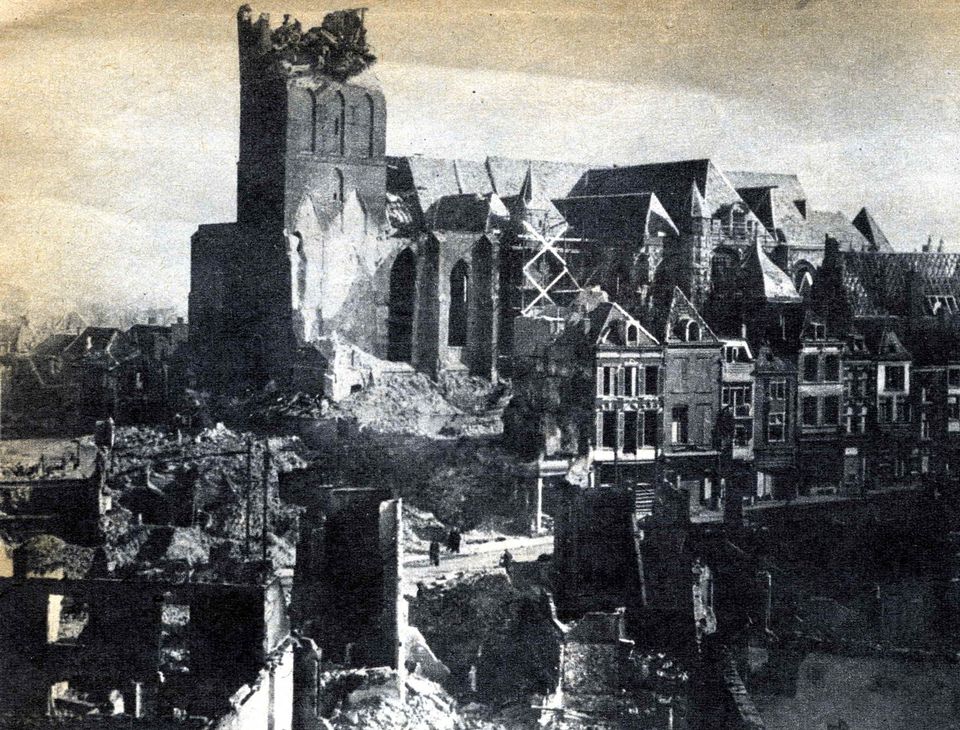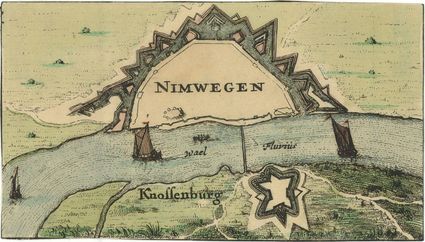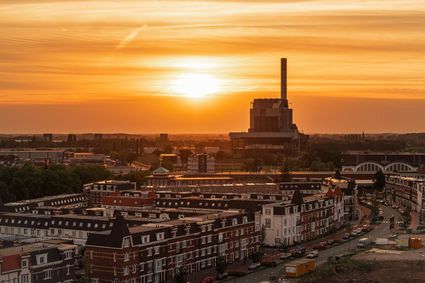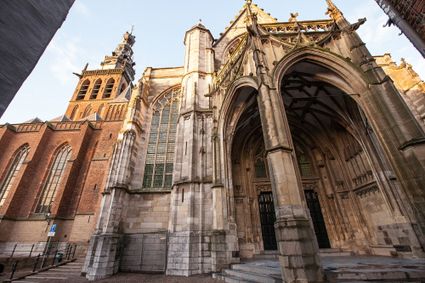Devastation, Nijmegen in the last year of World War II
Nijmegen is bursting at the seams with historical stories, ranging from leading figures to ordinary people, from neighbourhoods to political events. The Canon of Nijmegen encompasses the most important stories about Nijmegen’s history. One of these stories tells the tale of the disastrous year of 1944. Even though 1944 brought liberation from German occupation with it, it also brought an abundance of horror. A bombing raid and months of shelling caused immense damage as well as the loss of many lives.
1940 – 1944: destruction of bridges and the erroneous bombardment
On the very first day of the war, May 10th, 1940, the city got a taste of the destruction war would bring. Shortly after German soldiers entered Nijmegen, Dutch engineers destroyed the Waal-bridge, which had been opened only four years prior, as well as several other bridges and viaducts in an attempt to slow the German army’s advance into the Netherlands. Later, in the final phase of the occupation, Nijmegen was once again confronted with the brutal violence of war. On the sunny afternoon of Tuesday February 2nd, 1944, the city and its people were hit by a raid of American bombers, who were looking for a target of opportunity on their way back from Germany to the U.K. after an aborted operation. The bombs drew a destructive stripe from the Valkhof in the East of the city centre to the station area in the West. This “erroneous bombardment,” as it was later called, claimed nearly 800 lives. Additionally, as if the destruction of the city’s centre wasn’t bad enough, the occupying forces and the NSB tried to capitalise on the dismay among the population by insisting that it wasn’t them, but the Allies, who’d caused this destruction.
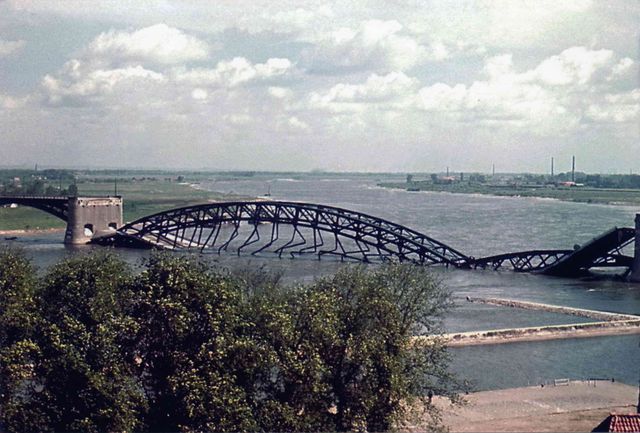
The Waal-bridge, shortly after its destruction by Dutch troops. On May 10, 1940, the bridge was blown up by Dutch Engineers to halt the advance of the German army. During the occupation, the Germans repaired the bridge, allowing them to use it starting in 1943.
1944 – 1945: Operation Market Garden and the liberation
Seven months later, in September 1944, the Allies launched Operation Market Garden. Fierce battles took place in and around Nijmegen for days, during which the 82nd Airborne Division under the command of General James Gavin tried to take the strategically important (and now repaired) Waal-bridge. Before that could happen, the Hitlerjügend and groups of German soldiers set fire to the buildings in the city centre that had survived the bombing, sometimes burning down whole streets. On September 20, the Allies were in control of the city. However, the war was far from over in Nijmegen; for months to come, the city would be part of the front line. The Germans continued to fire shells at Nijmegen from the Betuwe and the Rijkswald until February of 1945. This position in the front line claimed as many lives as the bombings in February of 1944: 800. The population of the upper parts of the city, especially the East of Nijmegen, had to keep seeking safety in air-raid shelters – the large Catholic school and monastery buildings chief among them. These hours in the shelters, often frightening but sometimes cheerful, were very intense experiences.
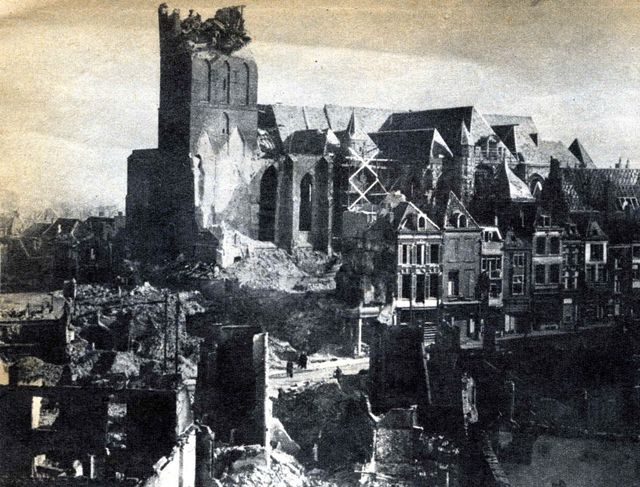
During the erroneous bombardment of February 22, 1944, the tower of the Stevenskerk and the adjacent (Stikke Hezelstraat and Houtstraat) were hit hard
More than 2200 citizens of Nijmegen didn’t survive the war. The city housed over 10,000 wounded individuals, 5,500 of whom would be permanently disabled. Almost a quarter (5,000) of all houses had been destroyed and around 13,000 had been seriously damaged. The housing shortage was extreme, especially considering there were 12,000 homeless people and 3,000 evacuees from the surrounding area living in the city.
Immerse yourself in the rich history of the oldest city in the Netherlands, because Nijmegen has a lot of stories to tell you. Curious? You can read all about it in this historical timeline.
